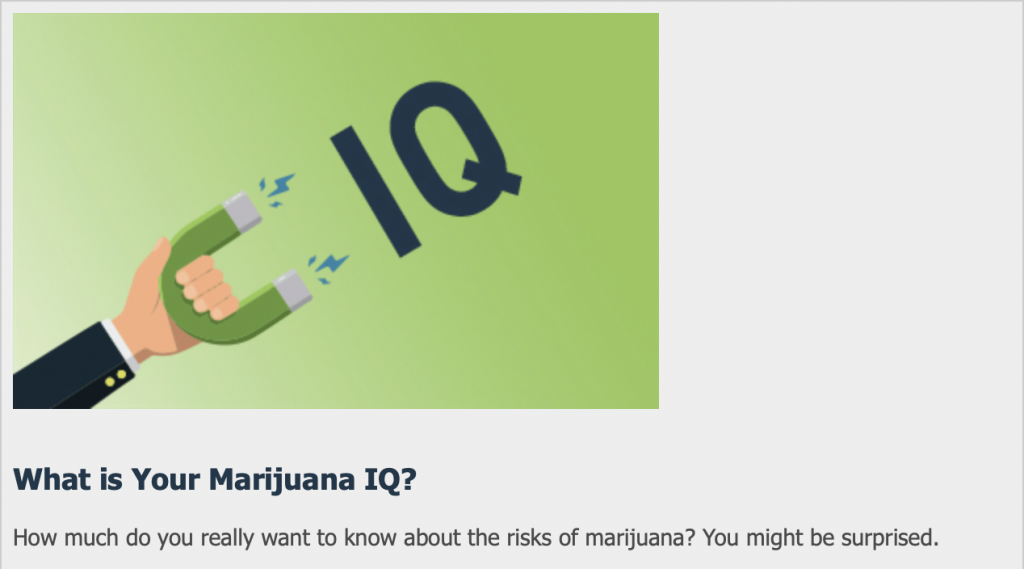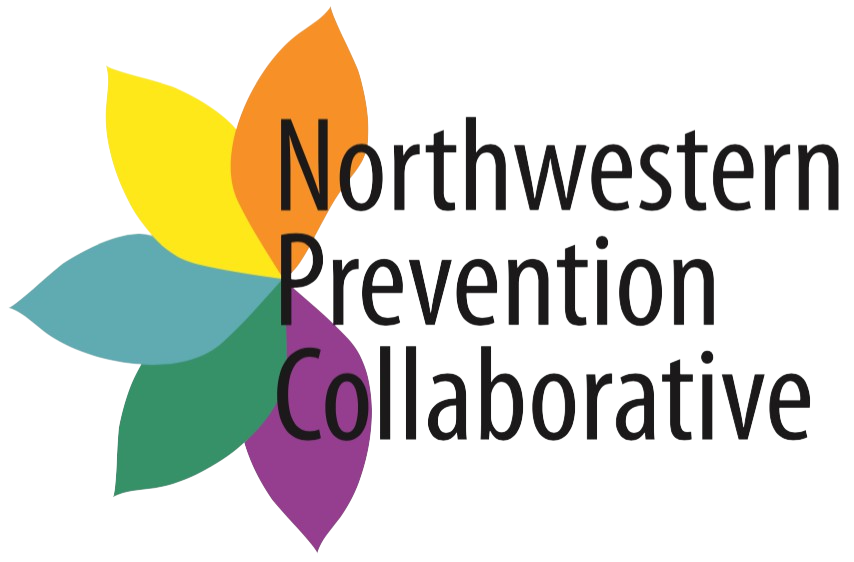Marijuana Risks
Marijuana use can have negative and long-term effects:
![]() Brain health: Marijuana can cause permanent IQ loss of as much as 8 points when people start using it at a young age. These IQ points do not come back, even after quitting marijuana.
Brain health: Marijuana can cause permanent IQ loss of as much as 8 points when people start using it at a young age. These IQ points do not come back, even after quitting marijuana.
![]() Mental health: Studies link marijuana use to depression, anxiety, suicide planning, and psychotic episodes. It is not known, however, if marijuana use is the cause of these conditions.
Mental health: Studies link marijuana use to depression, anxiety, suicide planning, and psychotic episodes. It is not known, however, if marijuana use is the cause of these conditions.
![]() Athletic Performance: Research shows that marijuana affects timing, movement, and coordination, which can harm athletic performance.
Athletic Performance: Research shows that marijuana affects timing, movement, and coordination, which can harm athletic performance.
![]() Driving: People who drive under the influence of marijuana can experience dangerous effects: slower reactions, lane weaving, decreased coordination, and difficulty reacting to signals and sounds on the road.
Driving: People who drive under the influence of marijuana can experience dangerous effects: slower reactions, lane weaving, decreased coordination, and difficulty reacting to signals and sounds on the road.
![]() Baby’s health and development: Marijuana use during pregnancy may cause fetal growth restriction, premature birth, stillbirth, and problems with brain development, resulting in hyperactivity and poor cognitive function. Tetrahydrocannabinol (THC) and other chemicals from marijuana can also be passed from a mother to her baby through breast milk, further impacting a child’s healthy development.
Baby’s health and development: Marijuana use during pregnancy may cause fetal growth restriction, premature birth, stillbirth, and problems with brain development, resulting in hyperactivity and poor cognitive function. Tetrahydrocannabinol (THC) and other chemicals from marijuana can also be passed from a mother to her baby through breast milk, further impacting a child’s healthy development.
![]() Daily life: Using marijuana can affect performance and how well people do in life. Research shows that people who use marijuana are more likely to have relationship problems, worse educational outcomes, lower career achievement, and reduced life satisfaction.
Daily life: Using marijuana can affect performance and how well people do in life. Research shows that people who use marijuana are more likely to have relationship problems, worse educational outcomes, lower career achievement, and reduced life satisfaction.

Marijuana Addiction
Contrary to popular belief, marijuana is addictive. Research shows that:
- 1-in-6 people who start using the drug before the age of 18 can become addicted.
- 1-in-10 adults who use the drug can become addicted.
Over the past few decades, the amount of THC in marijuana has steadily climbed; today’s marijuana has three times the concentration of THC compared to 25 years ago. The higher the THC amount, the stronger the effects on the brain—likely contributing to increased rates of marijuana-related emergency room visits. While there is no research yet on how higher potency affects the long-term risks of marijuana use, more THC is likely to lead to higher rates of dependency and addiction.
About Marijuana
Marijuana refers to the dried leaves, flowers, stems, and seeds from the Cannabis sativa or Cannabis indica plant. Marijuana is a psychoactive drug that contains close to 500 chemicals, including THC, a mind-altering compound that causes harmful health effects.
People smoke marijuana in hand-rolled cigarettes, in pipes or water pipes, in blunts, and by using vaporizers that pull THC from the marijuana. Marijuana can also be mixed in food (edibles), such as brownies, cookies, and candy, or brewed as a tea. People also smoke or eat different forms of marijuana extracts, which deliver a large amount of THC and can be potentially more dangerous.
Rise of Marijuana Use
Today, marijuana use is on the rise among all adult age groups, both sexes, and pregnant women. People ages 18-25 have the highest rate of use.
Marijuana and THC remain illegal at the federal level, even though many states have legalized its use. In states where legal, marijuana is a fast-growing industry with sales to individuals over 21 in retail stores, wineries, breweries, coffee shops, dispensaries, online, as well as grown at home.
Need Help?
If you, or someone you know, needs help with a substance use disorder, including marijuana use, call SAMHSA’s National Helpline at 1-800-662-HELP (4357) or TTY: 1-800-487-4889, or use SAMHSA’s Behavioral Health Treatment Services Locator to get help.
References and Relevant Resources
- Technology Transfer Centers (TTC) Program marijuana resources
- Tips for Teens: Marijuana
- Changes in Cannabis Potency over the Last Two Decades (1995-2014) – Analysis of Current Data in the United States: National Center for Biotechnology Information
- Does Marijuana Use Affect Driving? | NIDA
- Drug Facts: Marijuana | NIDA
- Drug Facts: Marijuana | United States Drug Enforcement Administration
- Early-Onset, Regular Cannabis Use Is Linked to IQ Decline | NIDA
- Is Marijuana Addictive? | NIDA
- 2019 National Survey on Drug Use and Health | SAMHSA
- Marijuana and Public Health | Centers for Disease Control and Prevention
- Marijuana: Facts for Teens | NIDA
- Marijuana: Is there a Link Between Marijuana Use and Psychiatric Disorders? | NIDA
- The Contribution of Cannabis Use to Variation in the Incidence of Psychotic Disorder Across Europe | The Lancet
Sourced from SAMHSA.gov

